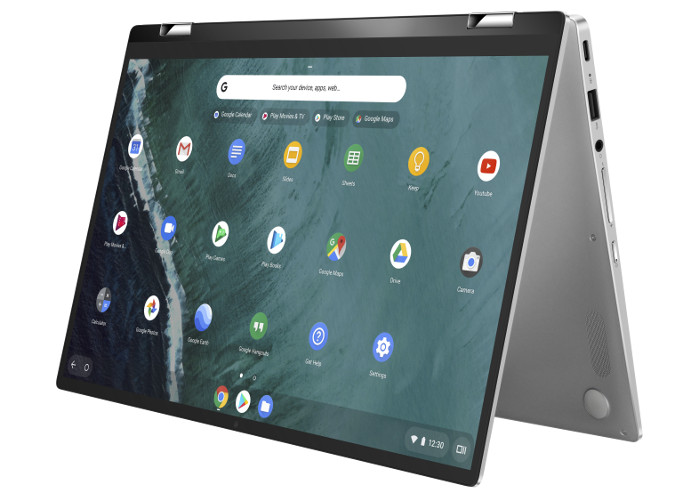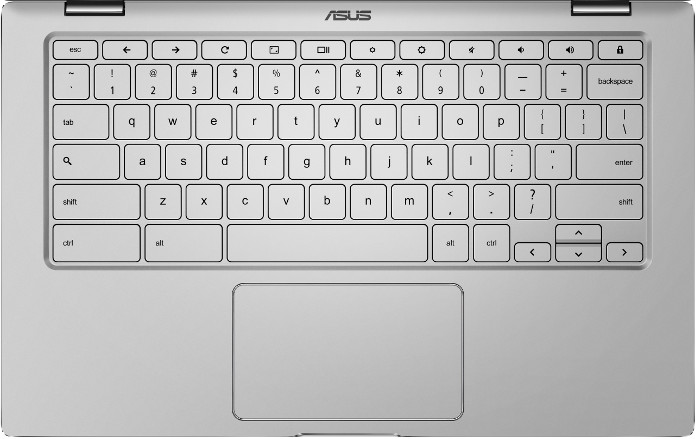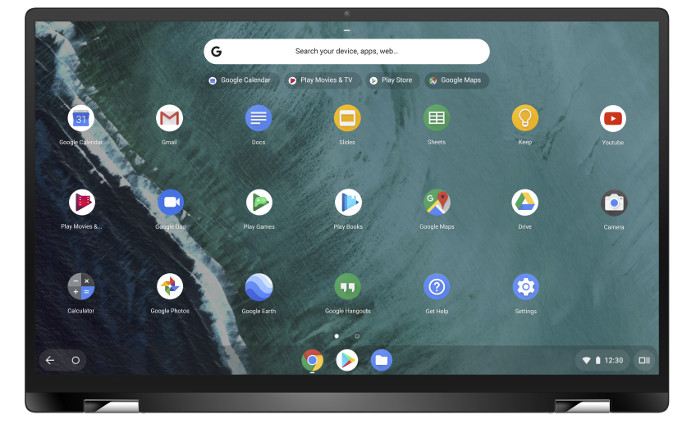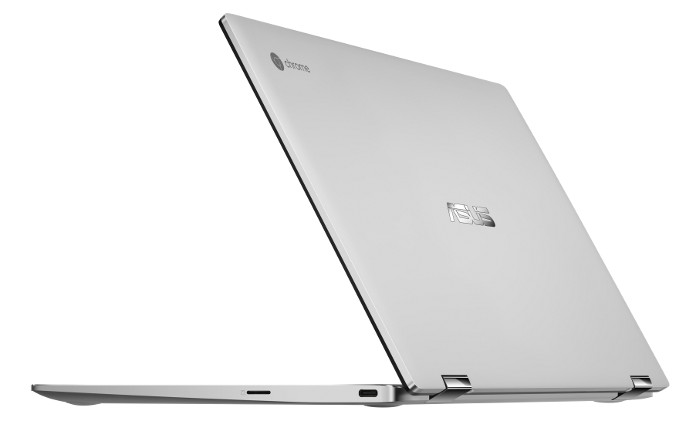I thought Asus had announced all of its Chromebook news before the Consumer Electronics Show started. They got me though: Debuting at CES 2019 is the Asus Chromebook C434 flip model but the device is still in the works. Even so, on paper, it has just about everything you’d want in a follow up to the Flip C302, from fresh new processors to a large display with minimal bezels.
Let’s hit the specs first, then discuss what they’ll mean for potential buyers as well as a few comparisons to the prior model, starting with the three fanless processor configurations:
- Intel Core M3-8100Y, 2C/4T, 1.1GHz (4MB cache, up to 3.4GHz)
- Intel Core i5-8200Y, 2C/4T, 1.3GHz (4MB cache, up to 3.9GHz)
- Intel Core i7-8500Y, 2C/4T, 1.5GHz (4MB cache, up to 4.2GHz)
- 14” LED-backlit IPS NanoEdge display, 100% sRGB, 1920 x 1080 with 5mm bezels and 360-degree hinge
- Up to 8GB LPDDR3
- Up to 128GB eMMC
- MicroSD card reader, 802.11ac Wi-Fi, Bluetooth 4.0
- Two USB Type-C ports, one USB Type-A port (all ports are USB 3.1)
- Backlit keyboard and multi-touch trackpad
- HD webcam, presumably 720p based on the lack of a “FullHD” mention
- 48 WHr battery, no estimated run-time yet
- 3.2 pounds
About the only thing missing would be a digital stylus and support for it with the Asus Chromebook 434. I’d prefer a slightly higher resolution display, but that’s just me. I’ve also moved away from widescreen displays; not everyone else has though. That display is a big upgrade from the C302, which only showed 45% of the NTSC color gamut. This one supports 100% sRGB color, which is a huge improvement. I don’t expect this device to be used much as a tablet due to its size, weight and the rounded bottom edge: The display won’t quite fold flat against the entire base.
The processor choices are the same 8th-generation Y-Series options found in the Pixel Slate, minus the Celeron option, so the new Flip should easily handle numerous tabs, Android and Linux apps with ease, especially when paired with 8 GB of memory, although I suspect the base model will have half that.
Since I mentioned the Pixel Slate and its comparable models, which start at $799 without a keyboard, let’s think about pricing since Asus hasn’t determined that yet.
Aside from the step down from Intel U-Series to Y-Series chips, as well as screen resolution, the new Asus Chromebook C434 is similar to the Acer Chromebook Spin 13; I reviewed the $899 Core i5 model of that device and it was fantastic. I’m thinking that the similarly configured Asus Chromebook C434 models will be between $100 and $150 less than the 13 Spin. Extrapolate that out and you get $650 or so for the mid-range C434, with the base hopefully starting at $549 to $599.
If, and it’s a big if yet, that price scheme holds true when Asus starts selling this Chromebook in the coming months, you’ll be getting a lot of Chromebook for the money and you won’t need to spend $800 to $1,000 to get it. Put another way: If Asus can start this device at $549, I think it will have a huge success in the market with the Chromebook C434.






